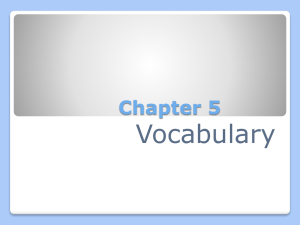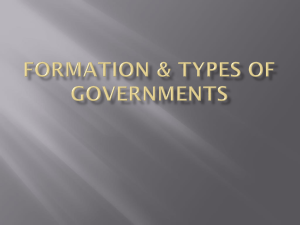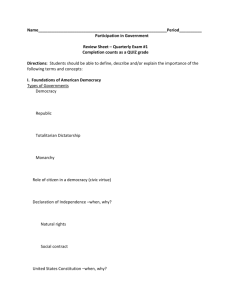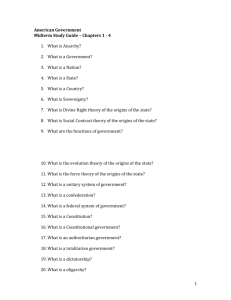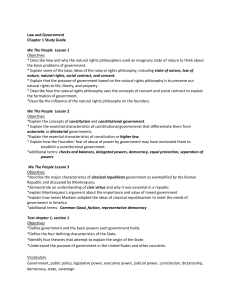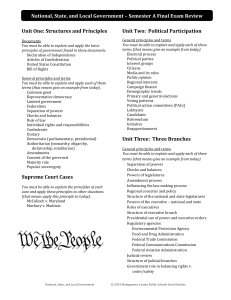5 Fundamental Principles of American Democracy
advertisement
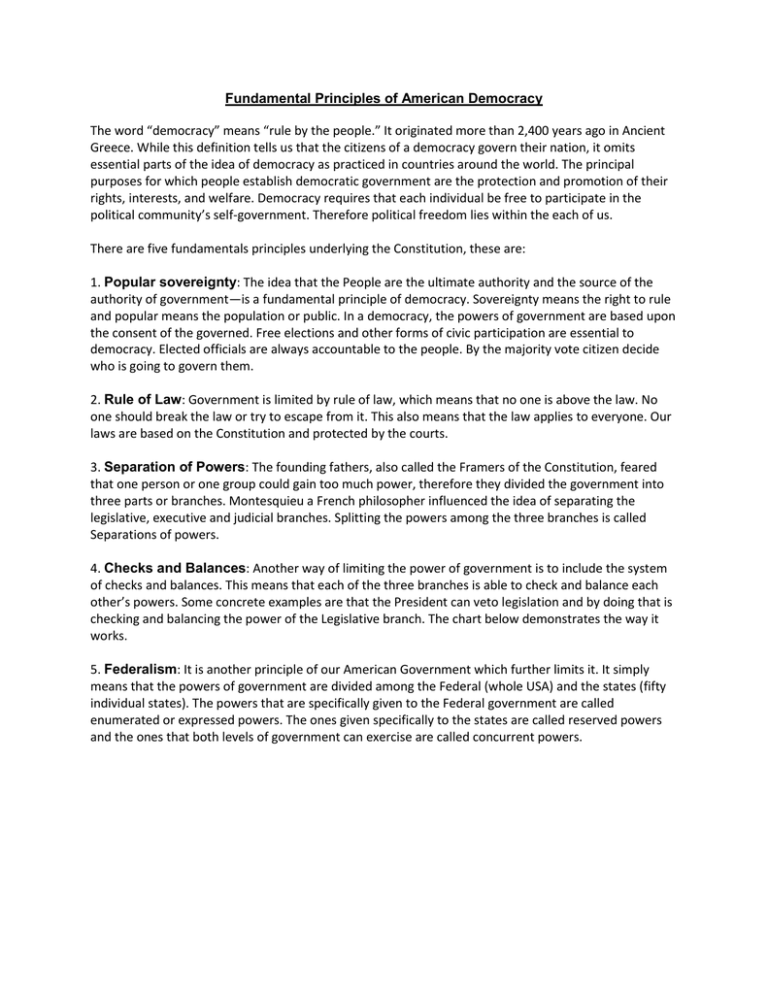
Fundamental Principles of American Democracy The word “democracy” means “rule by the people.” It originated more than 2,400 years ago in Ancient Greece. While this definition tells us that the citizens of a democracy govern their nation, it omits essential parts of the idea of democracy as practiced in countries around the world. The principal purposes for which people establish democratic government are the protection and promotion of their rights, interests, and welfare. Democracy requires that each individual be free to participate in the political community’s self-government. Therefore political freedom lies within the each of us. There are five fundamentals principles underlying the Constitution, these are: 1. Popular sovereignty: The idea that the People are the ultimate authority and the source of the authority of government—is a fundamental principle of democracy. Sovereignty means the right to rule and popular means the population or public. In a democracy, the powers of government are based upon the consent of the governed. Free elections and other forms of civic participation are essential to democracy. Elected officials are always accountable to the people. By the majority vote citizen decide who is going to govern them. 2. Rule of Law: Government is limited by rule of law, which means that no one is above the law. No one should break the law or try to escape from it. This also means that the law applies to everyone. Our laws are based on the Constitution and protected by the courts. 3. Separation of Powers: The founding fathers, also called the Framers of the Constitution, feared that one person or one group could gain too much power, therefore they divided the government into three parts or branches. Montesquieu a French philosopher influenced the idea of separating the legislative, executive and judicial branches. Splitting the powers among the three branches is called Separations of powers. 4. Checks and Balances: Another way of limiting the power of government is to include the system of checks and balances. This means that each of the three branches is able to check and balance each other’s powers. Some concrete examples are that the President can veto legislation and by doing that is checking and balancing the power of the Legislative branch. The chart below demonstrates the way it works. 5. Federalism: It is another principle of our American Government which further limits it. It simply means that the powers of government are divided among the Federal (whole USA) and the states (fifty individual states). The powers that are specifically given to the Federal government are called enumerated or expressed powers. The ones given specifically to the states are called reserved powers and the ones that both levels of government can exercise are called concurrent powers.

